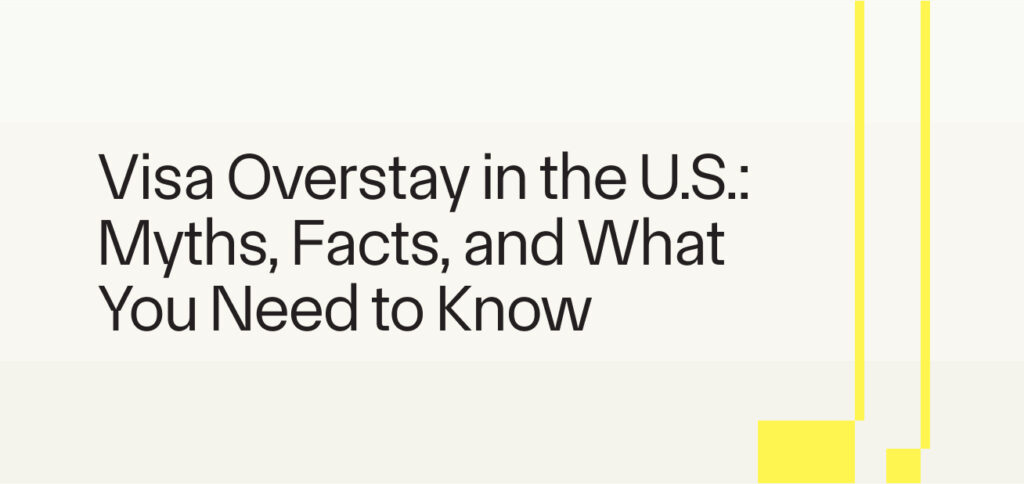Overstaying your visa in the United States is more common than many people realize, and so are the misunderstandings around what it means, what consequences it triggers, and whether anything can be done about it. In this article we’ll try to clear up the most common myths and explain when an overstay becomes a serious legal problem, and when there are still solutions.
What Is a Visa Overstay?
A visa overstay happens when you remain in the U.S. beyond the date authorized by U.S. immigration authorities. This date appears on the I-94 record, not the visa sticker in the passport.
For example, if you entered on a B-2 tourist visa, you may receive an I-94 valid for six months. If you remain beyond that date without changing or extending your status, you are considered to be “out of status” and, in many cases, accumulating unlawful presence.
Myth: Any Overstay Triggers an Automatic Ban
This is one of the most common misconceptions.
Fact: Not all overstays lead to a reentry ban. The legal consequences depend largely on how long you overstayed and whether you leave the U.S. after that overstay.
3- and 10-Year Bars
Under U.S. immigration law:
- Overstay of less than 180 days: No reentry bar is triggered.
- Overstay of 180–364 days: If you leave the U.S., you trigger a 3-year bar from reentering.
- Overstay of 1 year or more: If you leave, you trigger a 10-year bar from reentry.
These bars are automatic under the law once unlawful presence is established and you depart. The bars do not begin while you remain in the U.S.
Exceptions to the Overstay Consequences
Although overstaying a visa can lead to serious legal consequences, there are important exceptions in U.S. immigration law. In some cases, even though you’ve overstayed, you may still be able to adjust status, avoid a reentry bar, or qualify for waivers or humanitarian relief.
The most common exception is if you are an immediate relative of a U.S. citizen, more specifically, the spouse of a U.S. citizen, an unmarried child under 21 of a U.S. citizen, or the parent of an adult U.S. citizen. If you fall under these categories, you are still eligible to adjust status to permanent resident inside the U.S., even if you have overstayed your visa, as long as you’ve entered the U.S. legally.
Another exception is for minors under the age of 18. Unlawful presence does not begin to accrue until the age of 18.
In certain cases, filing an application for an immigration benefit before the status expires can protect you from accruing unlawful presence. For example, filing for a Change of Status while still in status, or filing a proper Adjustment of Status application.
Waiver of Inadmissibility
Even if a reentry bar has been triggered, certain applicants may be eligible to apply for a waiver using Form I-601 or I-601A — especially if you have a U.S. citizen or permanent resident spouse or parent who would suffer extreme hardship if the waiver were denied.
Waivers are discretionary and require careful preparation, but they provide a legal path forward even after a serious overstay.
Special Humanitarian Relief
In rare cases, you may be eligible for relief such as:
-
Asylum (if there’s a credible fear of return)
-
U visa (for victims of qualifying crimes)
-
T visa (for victims of trafficking)
-
VAWA relief (for victims of abuse by a U.S. citizen or LPR relative)
-
Cancellation of removal (in immigration court, after 10+ years and meeting specific hardship standards)
These options require strong evidence and legal support but can override many of the standard bars triggered by an overstay.
Key Takeaway
Not all overstays result in automatic bans or permanent bars to immigration benefits. There are clear exceptions built into U.S. immigration law. Relying on them without legal advice is risky.
If you’ve overstayed your visa, the best next step is to speak with an immigration lawyer who can assess whether one of these exceptions applies to your situation and help you act strategically before it’s too late.





